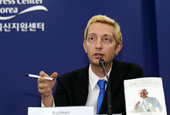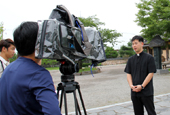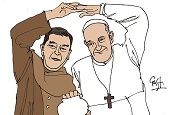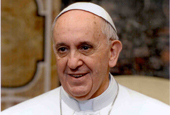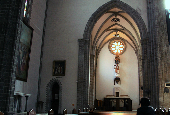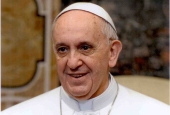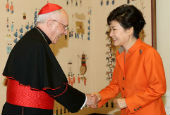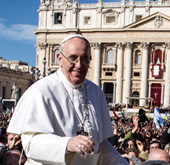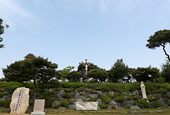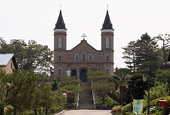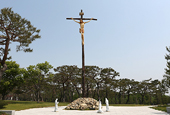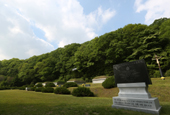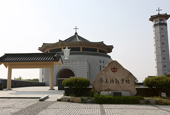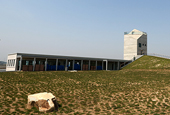St. Andrew Kim Dae-geon was martyred at the Saenamteo in Ichon-dong, in Seoul's Yongsan District, on September 16, 1846. At the time, there was a widespread persecution of Catholics. Among the 14 Catholic priests who were martyred in Korea, 11 lost their lives here. In the Saenamteo Martyr's Shrine there are still the remains of nine martyrs who have since been granted sainthood.
The Saenamteo and the Danggogae, another Catholic shrine where Korea's third highest number of Catholic saints was martyred, are now connected via an urban walking route, the Accord Trail, one of the three Catholic pilgrimage routes that crisscross Seoul. The Accord Trail also includes the Samseongsan, a site where Catholic priests who were killed at the Saenamteo were once buried, and the Jeoldusan, the first site visited by Pope John Paul II during his visit to Korea in 1984.
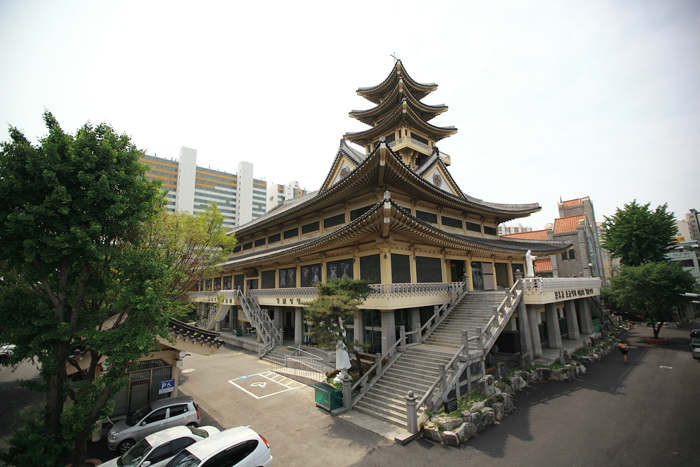
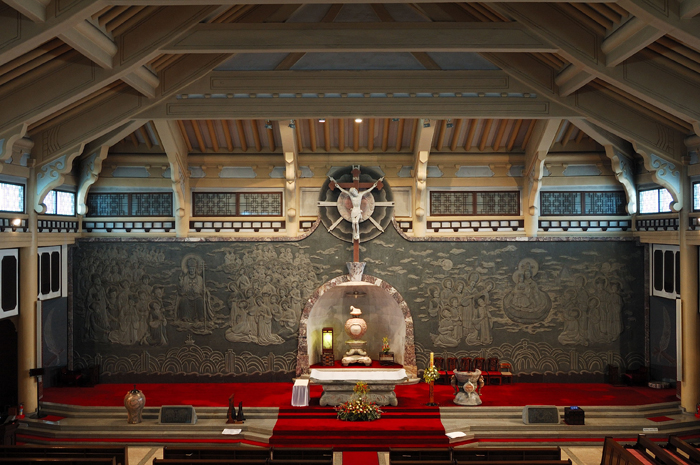
The remains of nine Catholic saints are interred at the Saenamteo Martyrs' Shrine. Eleven out of the 14 Catholic priests who were martyred in Korea died here. (photos courtesy of the Archdiocese of Seoul)
Ever since the beginning of the Joseon Dynasty (1392-1910), the Saenamteo, a low sand hill adjacent to a dock on the northern banks of the Hangang River, was the execution grounds for felons, including state criminals. Chinese priest Zhou Wenmo (Ju Mun-mo) Jacobus, the first missionary to arrive in Korea, was executed here on May 31, 1801, becoming the first Catholic martyr killed at the Saenamteo. On September 21, 1839, St. Jacques Honore Chastan, St. Pierre Philibert Maubant and St. Laurent Marie Joseph Imbert, the second bishop of the Joseon Archdiocese, were martyred here.
The bodies of the three priests were left untended for several days along the sandy banks of the Hangang River. Catholic believers risked their lives to claim the bodies and to bury them on Nogosan Mountain. Then, the bodies were moved and temporarily buried at Waegogae, the site of a brick and roof tile factory. In 1843, the bodies were moved again to Samseongsan Mountain, part of Gwanaksan Mountain. In November 1901, their remains were finally laid in Myeongdong Cathedral's catacombs.
In 1984, the three martyrs were granted sainthood by Pope John Paul II, who came to Korea on May 6 that year to mark the 200th anniversary of Catholicism in Korea. The canonization of 103 martyrs, including the three, took place in a large square in Yeouido, an island in the Hangang River. The square has since been turned into a park and today there is a monument there to commemorate the canonization.
On May 23, 1910, the body of St. Andrews Kim Dae-geon was temporarily placed in the old Yongsan Theological School, which is now the Sacred Heart Girls' High School. The eighth bishop of Joseon, Gustave Charles Marie Mutel, built a church inside the seminary in 1902 with sponsorship from a French woman named, "de Sarah." Kim's remains were later moved to what is now the Wonhyoro Catholic Church on June 23 that same year.
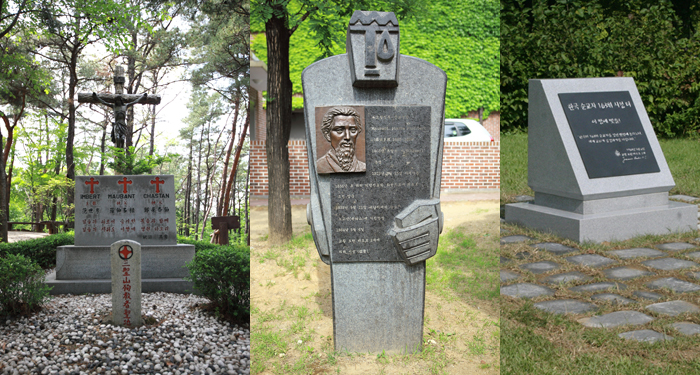
The Nogosan Martyrs' Shrine (left) and the Samseongsan Martyrs' Shrine (middle) once hosted the bodies of St. Jacques Honore Chastan, St. Pierre Philibert Maubant and St. Laurent Marie Joseph Imbert. On Yeouido (right), there is a monument at the 103 Korean Martyrs Canonization Site. (photos courtesy of the Archdiocese of Seoul)
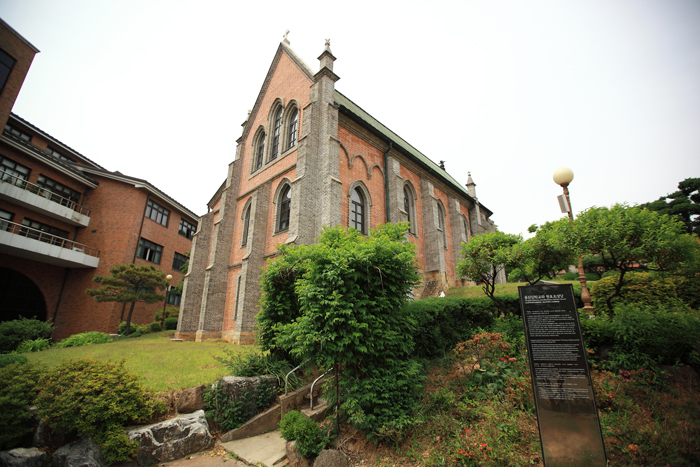
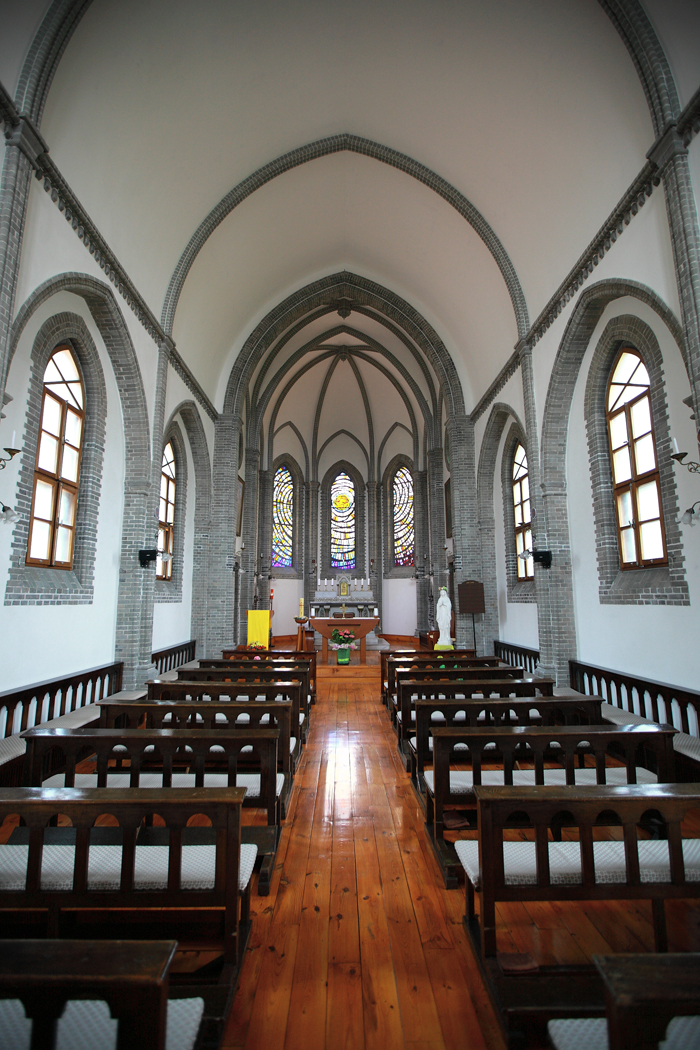
The Wonhyoro Catholic Church, part of the old Yongsan Theological School, is now inside the Sacred Heart Girls' High School. The remains of St. Andrew Kim Dae-geon were once placed inside this church. (photos courtesy of the Archdiocese of Seoul)
The Jeoldusan Martyrs' Shrine is the first place visited by Pope John Paul II during his visit to Korea in 1984. Jeoldusan, a rocky outcropping on which people can have a wide view of the Hangang River, was called the "mountain of decapitation," after the seven-year long persecution of Catholics that started in 1866.
The shrine consists of churches, a bell tower, some martyrs' tombs and a memorial hall where old documents and artifacts are preserved. The roof of the main church resembles the hats of Joseon-era aristocrats. The bell tower is designed after the racks used to bind prisoners. The chains hanging off the eaves symbolize shackles. The remains of 28 saints are buried in the basement tombs and relief sculptures of the martyrs are placed along the walls of the church.
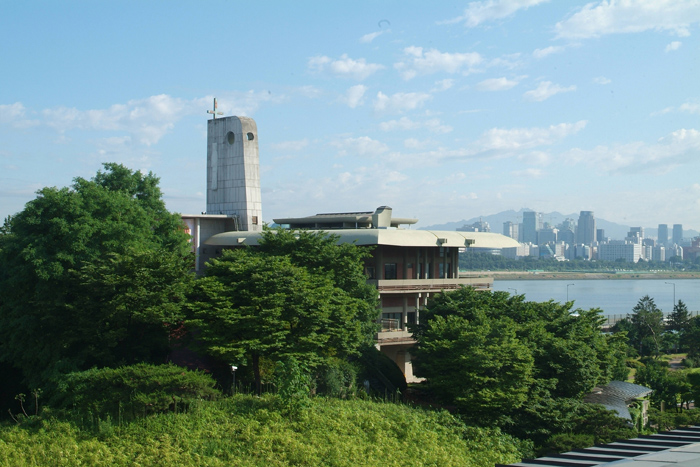
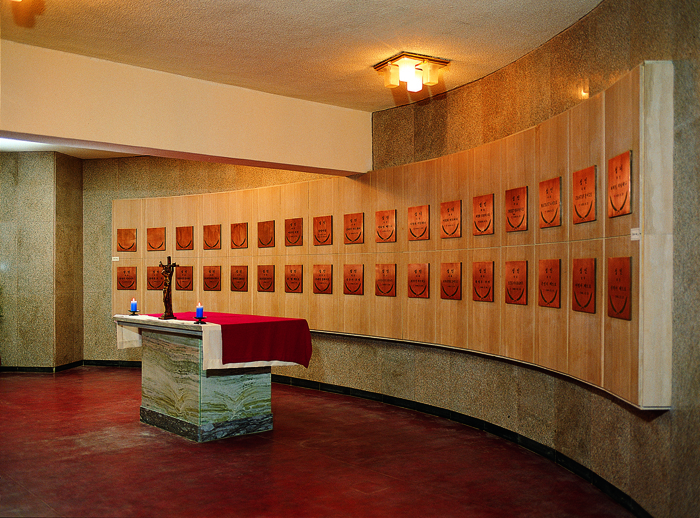
The remains of 28 saints are buried in the basement tombs of the main church at the Jeoldusan Martyrs' Shrine. (photos courtesy of the Archdiocese of Seoul)
The Danggogae Martyrs' Shrine is where the third highest number of Catholic saints in Korea was martyred. The area was named Danggogae because there used to be a temple here where civilians paid tribute to their ancestors. During the great persecution of 1839, ten Catholics were martyred here. They were mostly related to each other. Nine of them have since gained sainthood. The shrine is host to a church that was completed here in September 2011 and there is an eco-friendly grassy area on the church's roof.
"As we built the martyrs' shrines, we were able to meet the saints who remained calm in the face of an executioner's sword," said Kwon Cheol-ho Daniel, chief priest at the Danggogae Martyrs' Shrine. "They saw heaven in the edge of the sword. This is why they were able to keep their peace of mind in the face of the persecutions."
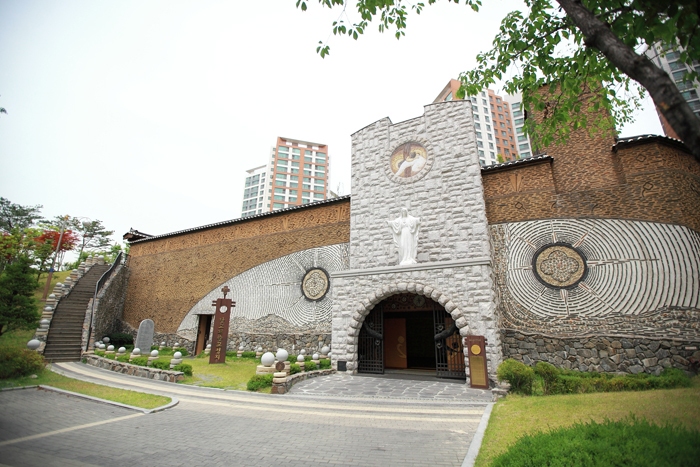
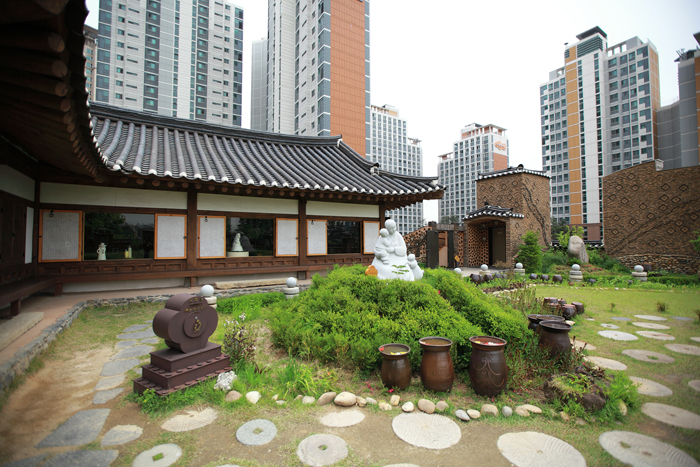
The Danggogae Martyrs' Shrine is where the third highest number of Catholic saints in Korea was martyred. On the church's roof, there is a sculpture of St. Mary on a grassy knoll. (photos courtesy of the Archdiocese of Seoul)
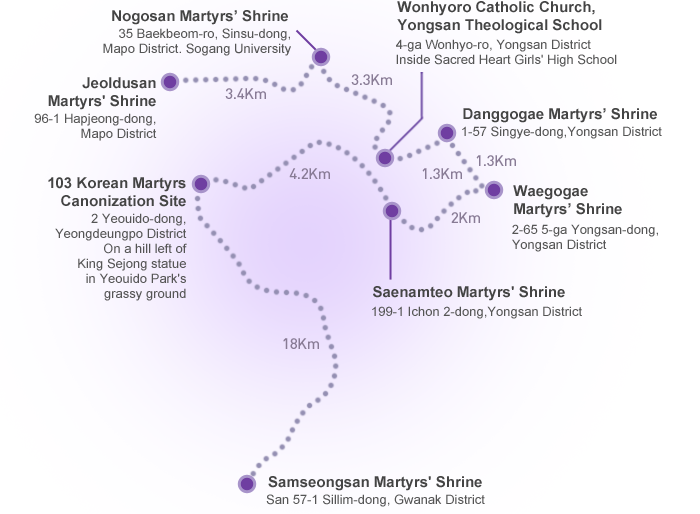
A map of the Accord Trail, one of the three pilgrimage routes across Seoul.
By Limb Jae-un
Korea.net Staff Writer
jun2@korea.kr
